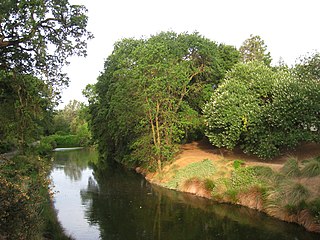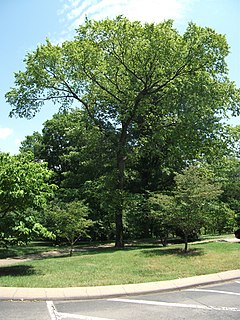This list of botanical gardens and arboretums in New Mexico is intended to include all significant botanical gardens and arboretums in the U.S. state of New Mexico [1] [2] [3]
This list of botanical gardens and arboretums in New Mexico is intended to include all significant botanical gardens and arboretums in the U.S. state of New Mexico [1] [2] [3]

An arboretum in a general sense is a botanical collection composed exclusively of trees. More commonly a modern arboretum is a botanical garden containing living collections of woody plants and is intended at least in part for scientific study.

The San Francisco Botanical Garden at Strybing Arboretum is located in San Francisco's Golden Gate Park. Its 55 acres represents nearly 9,000 different kinds of plants from around the world, with particular focus on Magnolia species, high elevation palms, conifers, and cloud forest species from Central America, South America and Southeast Asia.

The University of California, Davis Arboretum is an approximately 100-acre (0.40 km2) arboretum along the banks of the old north channel of Putah Creek on the south side of the University of California, Davis campus in unincorporated Yolo County, California, in the United States.

Ulmus crassifoliaNutt., the Texas cedar elm or simply cedar elm, is a deciduous tree native to south central North America, mainly in southern and eastern Texas, southern Oklahoma, Arkansas and Louisiana, with small populations in western Mississippi, southwest Tennessee and north central Florida; it also occurs in northeastern Mexico. It is the most common elm tree in Texas. The tree typically grows well in flat valley bottom areas referred to as 'Cedar Elm Flats'. The common name 'cedar elm' is derived from the trees' association with juniper trees, locally known as cedars.

Ulmus serotinaSarg., the September elm, is an autumn-flowering North American species of tree. It is uncommon beyond Tennessee; only very locally distributed through Illinois, Kentucky, Arkansas, Mississippi, Oklahoma, Alabama and Georgia, and disjunct into Nuevo León, Mexico. It grows predominantly on limestone bluffs and along streams to elevations of 400 m.

Ulmus mexicana(Liebm.) Planch., the Mexican elm, is a large tree endemic to Mexico and Central America. It is most commonly found in cloud forest and the higher elevations (800–2200 m) of tropical rain forest with precipitation levels of 2–4 m per year, ranging from San Luis Potosi south to Chiapas in Mexico, and from Guatemala to Panama beyond. The tree was first described botanically in 1873.
The possible elm cultivar Ulmus 'Jalaica' hails from the Baltic states. Living specimens are grown in the arboretum at the National Botanic Garden of Latvia, Salaspils, introduced in 1998 from the Tallinn Botanic Garden and the plantarium OPU Tallinn, Estonia. It was assumed the word 'Jalaica' was the name given the cultivar, but it has since emerged that the word simply means 'Elm' in Estonian, and the trees donated may not in fact be cultivars, although of rather unusual appearance.

The Botanischer Garten München-Nymphenburg is a botanical garden and arboretum located at Menzinger Str. 65, Munich, Bavaria, Germany. It is open daily, except on 24 and 31 December; an admission fee is charged.